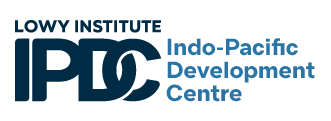Just about every country has rules and practices to sort out domestic bankruptcies, dividing up the surviving assets between the creditors on an equitable basis, writing off the losses, and giving the opportunity for the debtor to move on, albeit with reputational damage. For international debtors in trouble, however, there is no such system in place and the ad hoc methods are proving inadequate, yet again. This has been a live topic at the International Monetary Fund and World Bank meetings in Washington – not for the first time.
The problem has a long history. A good part of the 19th century foreign flows to colonial empires to build infrastructure was never repaid. The post First World War reparations and huge borrowing from America was a major driver of the descent into the Second World War. Afterwards, Cold War rivalry fostered flows to countries which had no capacity to repay, and they didn’t. With the first oil shock in the early 1970s, international banks “recycled” petrodollar wealth into Latin America, setting off the debt crisis of the 1980s, repeated again a decade later.
The 1997 Asian crisis saw a new element. The IMF’s funding was inadequate for the task, so was supplemented by additional funding, largely in the form of central bank swaps (short-term loans). A variant was added during the 2008 global financial crisis, when the US Federal Reserve provided very large swaps to European banks that needed dollar-denominated funds.
And common to each instance, this helped both debtors and creditors, at taxpayers’ expense.
The contemporary focus for heavily indebted countries includes Sri Lanka and Pakistan, as well as Egypt and Turkey. Their debt positions are very diverse, with no one-size-fits-all solutions. All this is playing out without an effective international debt restructuring framework.

First, there are huge differences among the countries categorised as “emerging”, with some knocked temporarily from a successful growth trajectory, while others are chronic underachievers without realistic prospects of being able to service any commercial debt. The first group can (and do) borrow on commercial terms, while anyone lending to the second group ought to understand that their lending has a significant grant component as they will not get it all back.
Second, some funds were provided under crisis circumstances with the specific aim of keeping the recipient afloat through a temporary crisis or buy time for an orderly resolution. The providers can legitimately expect to have repayment priority in any debt negotiations. This favoured group should, of course, include the IMF.
Without this clear repayment priority, no crisis funding would be provided. In addition, there must be specific measures to ensure that these new funds are not used to repay old debts, so there needs to be stand-still arrangements (as is the case with domestic bankruptcies) to ensure that no creditors jump the repayment queue.
Third, this prioritisation raises a question: should the same be given to the very large sums currently being provided (e.g. to Turkey, Egypt and Pakistan) as emergency crisis funding by China and the Middle-East petroleum economies, almost always to gain political advantage?
And fourth there is a related question: what about the multilateral development banks (MDBs)? At present they share the benefit of this repayment priority. This made sense when the World Bank was providing concessional loans on favourable terms to poor countries. As with crisis funding, the loans would not be made if the criteria had been commercial viability. So it is reasonable to expect priority repayment when these clearly-risky concessional loans go bad. In addition to the original core MDBs, however, there are now specialised regional development banks, such as the Asian Infrastructure Development Bank, which are MDBs but with a more commercial mandate, with funds not necessarily flowing to the poorest and most needy. Does China’s Belt-and-Road (now with different branding) fall into the priority-repayment category, when its aims are so heavily political?
If political motivation precludes priority repayment, then the World Bank and even the IMF might lose priority status (recall the Fund’s amazingly generous treatment of serial-defaulter Argentina and its current lending to Ukraine).
The starting point in coming to grips with these issues should be that the debt has to be definitively restructured, and this should be done promptly so the debtor can move forward. The routine kicking-down-the-road that occurred in the 1980s Latin American crisis and with Greece after the global financial crisis may buy time for the creditors to ready themselves for losses, but it makes things worse for the debtor.
Even where this restructuring takes the form of greatly extended repayment terms with low (or zero) interest rates, this is still better than leaving debt unresolved. Rescheduling is a de facto write-down which may allow the creditor to accommodate the losses without formal recognition in balance sheets: this might help the Chinese, who have constraints in formally writing off official debt. There are many precedents here. For example, in 1968, when Indonesia’s heavy burden of foreign debt was rescheduled for thirty years (with an eight-year ‘grace’ period) at low interest, the debt was effectively written off, which was the only realistic solution for the then-bankrupt economy.
While domestic bankruptcies are fraught, they are usually effective. Why can’t this be done internationally? The first requirement is that all creditors must accept that they have lost part or all of their money. In domestic bankruptcy, this is adjudicated by a specialised institution, usually a court. The IMF is the multilateral crisis expert but has never been allowed to serve this function. Without such as adjudicator, the field is left open for individual creditors to exercise their legal skills in getting a good deal for themselves.
A product of the Lowy Institute Indo-Pacific Development Centre, with funding support from the Australian Department of Foreign Affairs and Trade.


